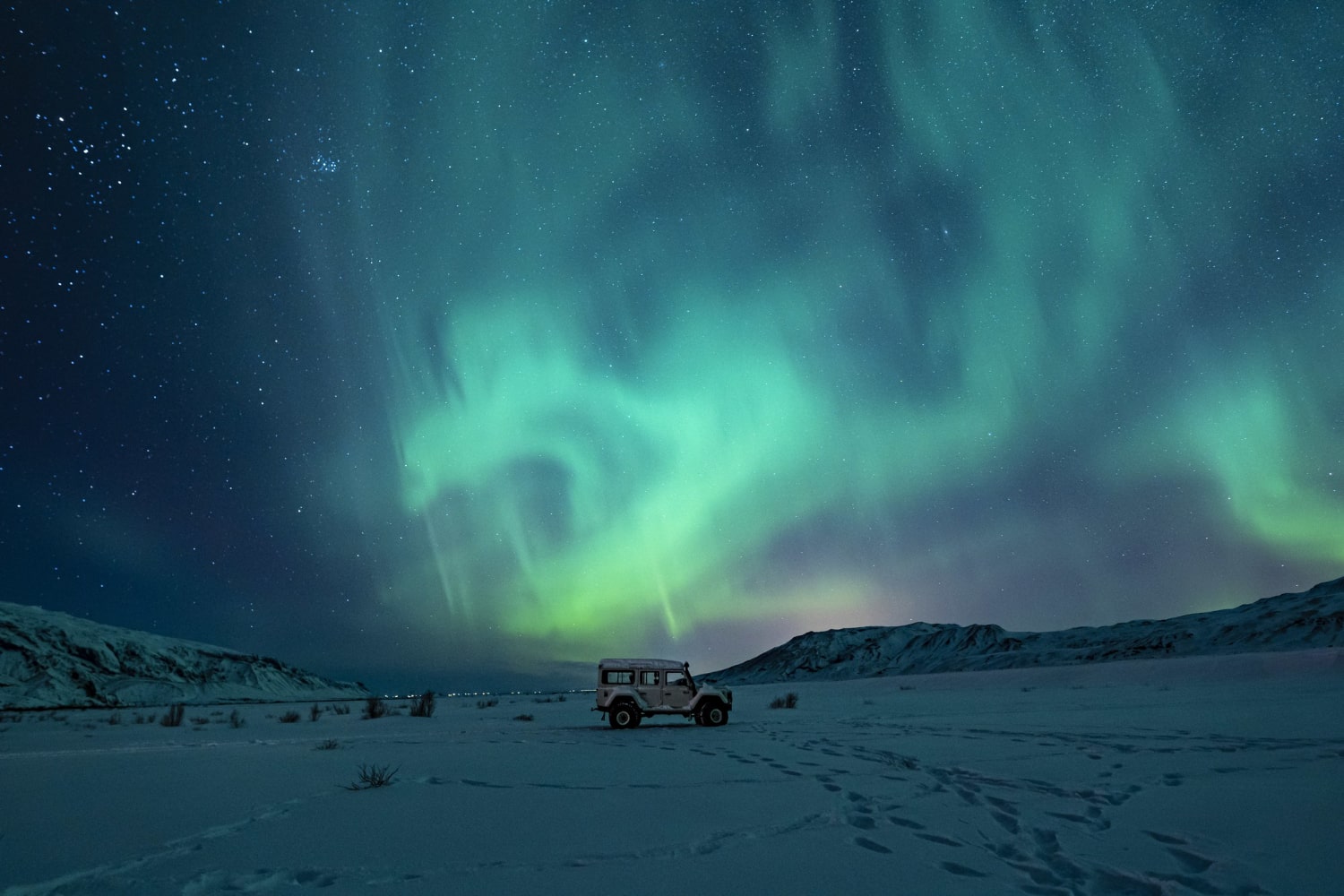The Northern Lights are one of the most fascinating natural phenomena that have inspired people around the world for centuries. The mysterious lights dancing across the night sky captivate both nature lovers and scientists. The auroras not only offer a stunning visual experience but also reveal the complex interactions between the Sun and the Earth’s magnetic field. They mostly occur near the polar regions, but under rare conditions, they can be seen far from the Arctic. Below are some captivating and little-known facts about the Northern Lights that you might not be aware of.
- The Northern Lights are created when solar wind particles interact with the Earth’s magnetosphere. These charged particles from the Sun collide with atmospheric gases and excite their atoms. As a result, the gases emit light that appears as colorful streaks in the sky.
- In the Northern Hemisphere, this phenomenon is called the Northern Lights or Aurora Borealis, while in the Southern Hemisphere it is known as the Southern Lights or Aurora Australis. Both types have the same origin but occur in opposite parts of the globe. The strength and visibility of the auroras depend on the level of solar activity.
- The best conditions for seeing the Northern Lights are in countries near the magnetic poles, such as Norway, Finland, Iceland, Canada, and Alaska. In these regions, the magnetic field lines direct solar particles toward the atmosphere. Many tour agencies organize special trips to witness this stunning event.
- Auroras usually occur at altitudes between 80 and 500 kilometers above the Earth’s surface. The height depends on the energy and type of particles interacting with the atmosphere. More energetic particles create lights higher in the sky.
- The color of the aurora depends on the type of gas being excited. Green comes from oxygen atoms, red from high-altitude oxygen, and blue or violet from nitrogen molecules. Sometimes pink and orange hues are also visible during strong auroras.
- The shape and intensity of auroras are influenced by geomagnetic storms triggered by solar flares and coronal mass ejections. During powerful storms, auroras can be visible as far south as central Europe. These events are more common during periods of high solar activity.
- Many ancient cultures saw spiritual or mythical meanings in auroras. In Norse mythology, they were believed to be the reflections of Valkyries’ armor, while some Siberian tribes thought they were the souls of ancestors dancing in the sky. Indigenous Arctic peoples also created rich folklore around these lights.
- Auroras are not unique to Earth and have been observed on other planets such as Jupiter, Saturn, Uranus, and Neptune. These planets have strong magnetic fields and atmospheres that allow similar light displays. For example, Jupiter’s auroras are far more powerful than those on Earth.
- The light show of the aurora can last anywhere from a few minutes to several hours. Sometimes the display builds slowly, while at other times it erupts suddenly and covers the whole sky. The shapes can vary from arches and curtains to spirals and pulsating rays.
- Auroras can interfere with technology as well as amaze the eye. They may disrupt radio waves, GPS signals, and even satellite operations. That is why monitoring geomagnetic activity is crucial for aviation and telecommunications.
- Scientists classify aurora shapes into various types such as arcs, rays, bands, and diffuse glows. This classification helps researchers better understand the structure and behavior of auroral activity. Observing these patterns also helps improve space weather forecasting.
- In 2024, one of the most spectacular auroras in the last decade was recorded. The lights were seen even in central European countries such as Germany and the Czech Republic. This event resulted from a strong geomagnetic storm caused by a coronal mass ejection from the Sun.
- Auroras are not only observed from the ground but also from aircraft and satellites. Specialized research missions collect data about their physical characteristics. These data are used to predict magnetic storms and understand how they affect the Earth.
- In popular culture, the aurora often symbolizes wonder and mystery. It appears in films, music, literature, and visual art. For many people, witnessing the aurora is a dream come true and a deeply emotional experience.
- There are mobile apps available that help forecast aurora sightings. These apps consider solar activity, weather conditions, and the user’s location. They allow users to plan the best time and place to see the aurora.
The Northern Lights are a breathtaking natural spectacle that combines beauty with scientific intrigue. Each sighting is a unique experience that leaves a lasting impression. They remind us of the powerful yet delicate forces at work in our solar system. Learning about these lights enhances our appreciation of Earth’s complexity and its place in the cosmos.





